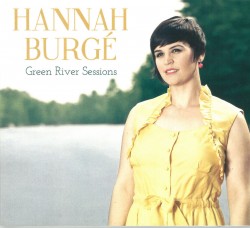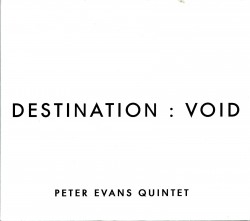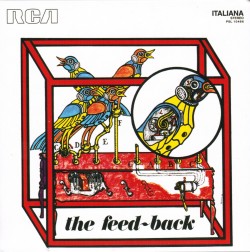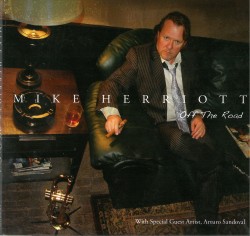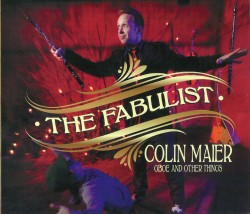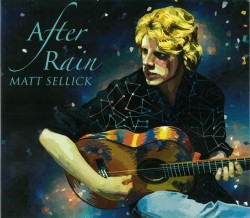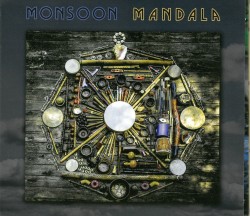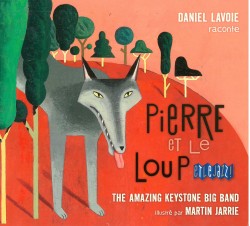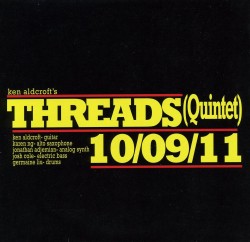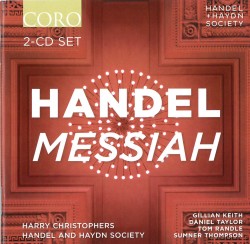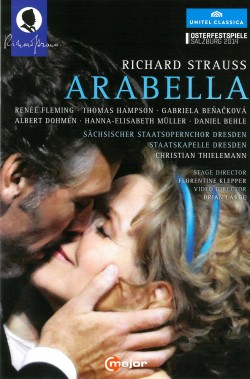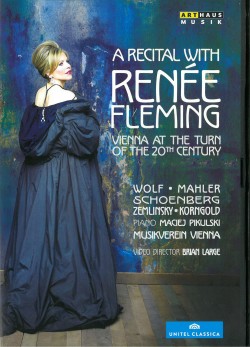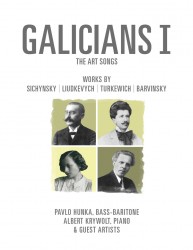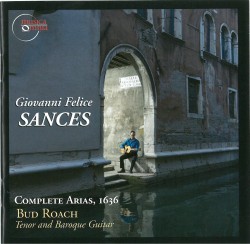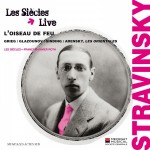 In the New Releases section of The WholeNote last October I enthusiastically reviewed Le Sacre du Printemps and Petrouchka performed by an orchestra new to me, Les Siècles directed by François-Xavier Roth. The initial interest was the score of Le Sacre, a scholarly and painstaking reconstruction of Stravinsky’s original, played on period instruments. It proved to be a lot more than simply that. Since then I now have all seven of their recordings made since 2009 and each disc is exemplary and first in its class. I am pleased to briefly draw them to your attention.
In the New Releases section of The WholeNote last October I enthusiastically reviewed Le Sacre du Printemps and Petrouchka performed by an orchestra new to me, Les Siècles directed by François-Xavier Roth. The initial interest was the score of Le Sacre, a scholarly and painstaking reconstruction of Stravinsky’s original, played on period instruments. It proved to be a lot more than simply that. Since then I now have all seven of their recordings made since 2009 and each disc is exemplary and first in its class. I am pleased to briefly draw them to your attention.
Les Siècles, founded in 2003 by their conductor François-Xavier Roth, is an orchestra of outstanding younger musicians drawn from France’s best ensembles. They have full access to original instruments from the Baroque period forward and employ the instruments in use at the time of each composition… not copies but the instruments themselves. The effect on the different overall timbre is a revelation, not weakening the impact but increasing and refining as never before. Except for the Berlioz, the liner notes with each disc list the name of every player together with their instrument and its provenance. All their recorded performances, regardless of the many venues, enjoy the same translucent 3D sound thanks to Jiri Heger, a professional violist and composer, who produces, balances, mixes and edits the recordings.
A review of Stravinsky’s Firebird (1910) and the Fokine ballet Le Orientales (1910) (ASM 06) appeared in the Classical and Beyond section of the November issue, easily found at thewholehote.com. Here are the other five North American releases on their own label, Les Siècles Live:
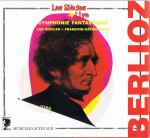 Berlioz: Symphonie Fantastique (ASM 02). With all of the competition it is impressive how many unsuspected shadowy areas are gently illuminated to emotional effect. I’ve never noticed that at the end of the first movement the dreamer falls into deep sleep. The second movement has all the diaphanous textures that one could want – extraordinary articulation in the strings so well captured in the recording. Movement three is a little gentler than usual and still the soundscape is uncanny in revealing everything without highlighting anything. The fourth is rich timbres as opposed the usual blaring or shrieking. The tempo stays moderate and constant to great effect. The final movement is very controlled and has a steady forward stable flow, which without sounding driven, is faster than usual. Very satisfying indeed. Recorded live at La Côte-Saint André.
Berlioz: Symphonie Fantastique (ASM 02). With all of the competition it is impressive how many unsuspected shadowy areas are gently illuminated to emotional effect. I’ve never noticed that at the end of the first movement the dreamer falls into deep sleep. The second movement has all the diaphanous textures that one could want – extraordinary articulation in the strings so well captured in the recording. Movement three is a little gentler than usual and still the soundscape is uncanny in revealing everything without highlighting anything. The fourth is rich timbres as opposed the usual blaring or shrieking. The tempo stays moderate and constant to great effect. The final movement is very controlled and has a steady forward stable flow, which without sounding driven, is faster than usual. Very satisfying indeed. Recorded live at La Côte-Saint André.
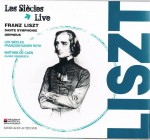 Liszt: Dante Symphony; Orpheus (ASM 07). This is an outstanding performance of this most elusive of Liszt’s large orchestral works, with long solo lines that require sensitive treatment; they certainly get it here with flowing sinuous lines, unmistakably pre-Wagnerian. The gentle effulgence of the final Magnificat is ethereally sublime with a boys choir. An uncommonly poetic reading of Orpheus benefits from the same acoustic, the Cathédrale Notre-Dame de Laon. Definitive performances and a must-have for fans of the repertoire.
Liszt: Dante Symphony; Orpheus (ASM 07). This is an outstanding performance of this most elusive of Liszt’s large orchestral works, with long solo lines that require sensitive treatment; they certainly get it here with flowing sinuous lines, unmistakably pre-Wagnerian. The gentle effulgence of the final Magnificat is ethereally sublime with a boys choir. An uncommonly poetic reading of Orpheus benefits from the same acoustic, the Cathédrale Notre-Dame de Laon. Definitive performances and a must-have for fans of the repertoire.
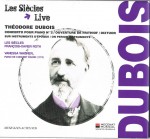 Theodore Dubois: Piano Concerto No.2, Overture de Frithiof, Dixtuor (ASM 09). Attractive works made all the more charming by the sound of the less percussive 1874 Érard piano. It is important to music lovers to have such sensitive performances of this still out-of-the-way French minor master. This repertoire is something Les Siècles obviously enjoy doing and they do it uniquely.
Theodore Dubois: Piano Concerto No.2, Overture de Frithiof, Dixtuor (ASM 09). Attractive works made all the more charming by the sound of the less percussive 1874 Érard piano. It is important to music lovers to have such sensitive performances of this still out-of-the-way French minor master. This repertoire is something Les Siècles obviously enjoy doing and they do it uniquely.
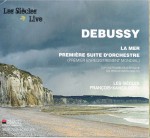 Debussy: Premiére Suite d’Orchestre, La Mer (ASM 10). This disc contains the 25-minute orchestral suite written in 1883/84 when Debussy was departing from the tradition of his masters at the Conservatoire. Although the scoring was completed by Philippe Manoury it is self-recommending, especially after the subtle and colourful account of La Mer played with all the finesse now expected of this ensemble.
Debussy: Premiére Suite d’Orchestre, La Mer (ASM 10). This disc contains the 25-minute orchestral suite written in 1883/84 when Debussy was departing from the tradition of his masters at the Conservatoire. Although the scoring was completed by Philippe Manoury it is self-recommending, especially after the subtle and colourful account of La Mer played with all the finesse now expected of this ensemble.
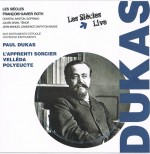 Dukas: L’Apprenti Sorcier, Velléda, Polyeucte (ASM 12). The playful Sorcerer’s Apprentice, Dukas’ best known opus based on the amusing tale of the magician’s acolyte whose invocations get out of hand, is just made for this versatile group. It is nice to also have two out-of-the-way works to fill out his meagre catalogue; Velléda, a cantata for soprano, tenor and bass-baritone based on a text by Fernand Beissier, and the dramatic overture to Corneille’s tragedy Polyeucte.
Dukas: L’Apprenti Sorcier, Velléda, Polyeucte (ASM 12). The playful Sorcerer’s Apprentice, Dukas’ best known opus based on the amusing tale of the magician’s acolyte whose invocations get out of hand, is just made for this versatile group. It is nice to also have two out-of-the-way works to fill out his meagre catalogue; Velléda, a cantata for soprano, tenor and bass-baritone based on a text by Fernand Beissier, and the dramatic overture to Corneille’s tragedy Polyeucte.
Les Siècles’ live recordings are published by Musicales Actes Sud, a part of the publishing empire Actes sud in Arles.
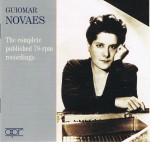 One of my most pleasant memories from back in the day, around 1960, was a recital given at the University of Toronto by the Brazilian pianist Guiomar Novaes. I recall a lady of slight stature gently walking over the piano, seating motionless and waiting for the recording light to indicate that she was “on.” She immediately began playing and when she finished she just walked off. I was enchanted by her playing as were the other members of the audience. Today I still see her clearly in my mind’s eye but sadly cannot recall the repertoire. Novaes (1895-1979) was a pianist firmly rooted in the Romantic era who began making recordings in 1919 and continued well into the LP era, recording some major works including concertos by Beethoven, Mozart, Chopin and Schumann with conductors Otto Klemperer, Jonel Perlea and Hans Swarowsky. Among her admirers was the respected New York Times critic Harold C. Schonberg who wrote in her obituary that “the sheer beauty of her playing managed to transcend any other considerations; it was its own reward… it is hard to think of a pianist whose playing gave so much pleasure as that of Guiomar Novaes.” It is claimed by the cognoscenti that her aristocratic and seemingly effortless playing is best represented by her pre-LP recordings, long out of print and sought after by collectors. Appian has collected her Complete 78RPM Recordings and issued them on a reduced price two-CD set (APR 6015). Recorded between 1919 and 1927 (disc one) and 1940 to 1947 (disc two), the sound reflects their vintage but the collection of short works reflects an era when an artist was expected to inflect performances. The 53 tracks include works by Gottschalk, Chopin, Albéniz, Liszt, Beethoven, Scarlatti and others, including 16 of Villa-Lobos. Note that the surface noise of the original 78s is, of course, omnipresent.
One of my most pleasant memories from back in the day, around 1960, was a recital given at the University of Toronto by the Brazilian pianist Guiomar Novaes. I recall a lady of slight stature gently walking over the piano, seating motionless and waiting for the recording light to indicate that she was “on.” She immediately began playing and when she finished she just walked off. I was enchanted by her playing as were the other members of the audience. Today I still see her clearly in my mind’s eye but sadly cannot recall the repertoire. Novaes (1895-1979) was a pianist firmly rooted in the Romantic era who began making recordings in 1919 and continued well into the LP era, recording some major works including concertos by Beethoven, Mozart, Chopin and Schumann with conductors Otto Klemperer, Jonel Perlea and Hans Swarowsky. Among her admirers was the respected New York Times critic Harold C. Schonberg who wrote in her obituary that “the sheer beauty of her playing managed to transcend any other considerations; it was its own reward… it is hard to think of a pianist whose playing gave so much pleasure as that of Guiomar Novaes.” It is claimed by the cognoscenti that her aristocratic and seemingly effortless playing is best represented by her pre-LP recordings, long out of print and sought after by collectors. Appian has collected her Complete 78RPM Recordings and issued them on a reduced price two-CD set (APR 6015). Recorded between 1919 and 1927 (disc one) and 1940 to 1947 (disc two), the sound reflects their vintage but the collection of short works reflects an era when an artist was expected to inflect performances. The 53 tracks include works by Gottschalk, Chopin, Albéniz, Liszt, Beethoven, Scarlatti and others, including 16 of Villa-Lobos. Note that the surface noise of the original 78s is, of course, omnipresent.
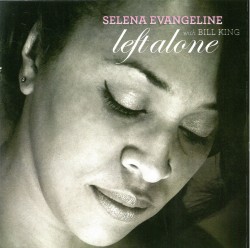 Left Alone
Left Alone

